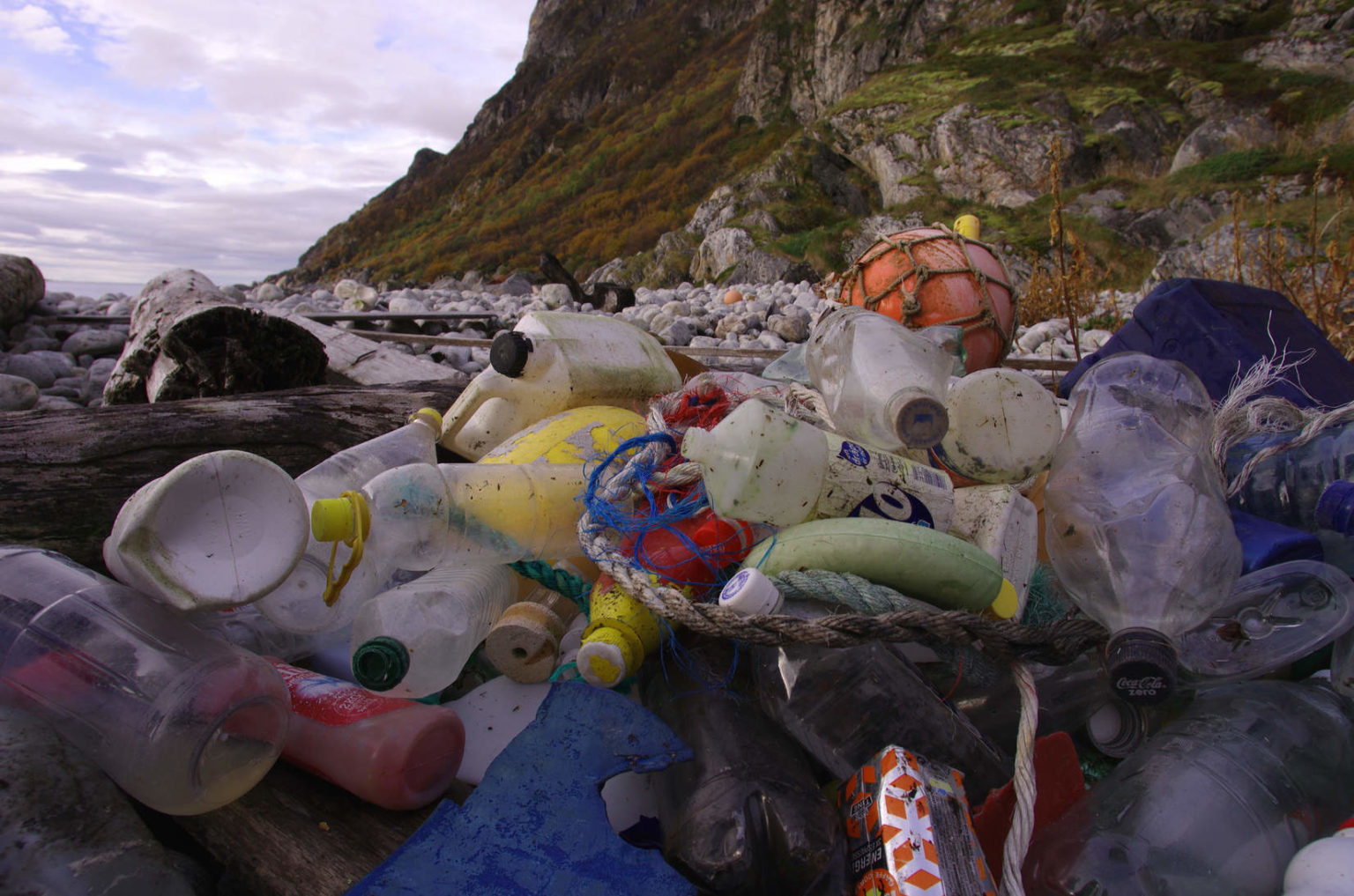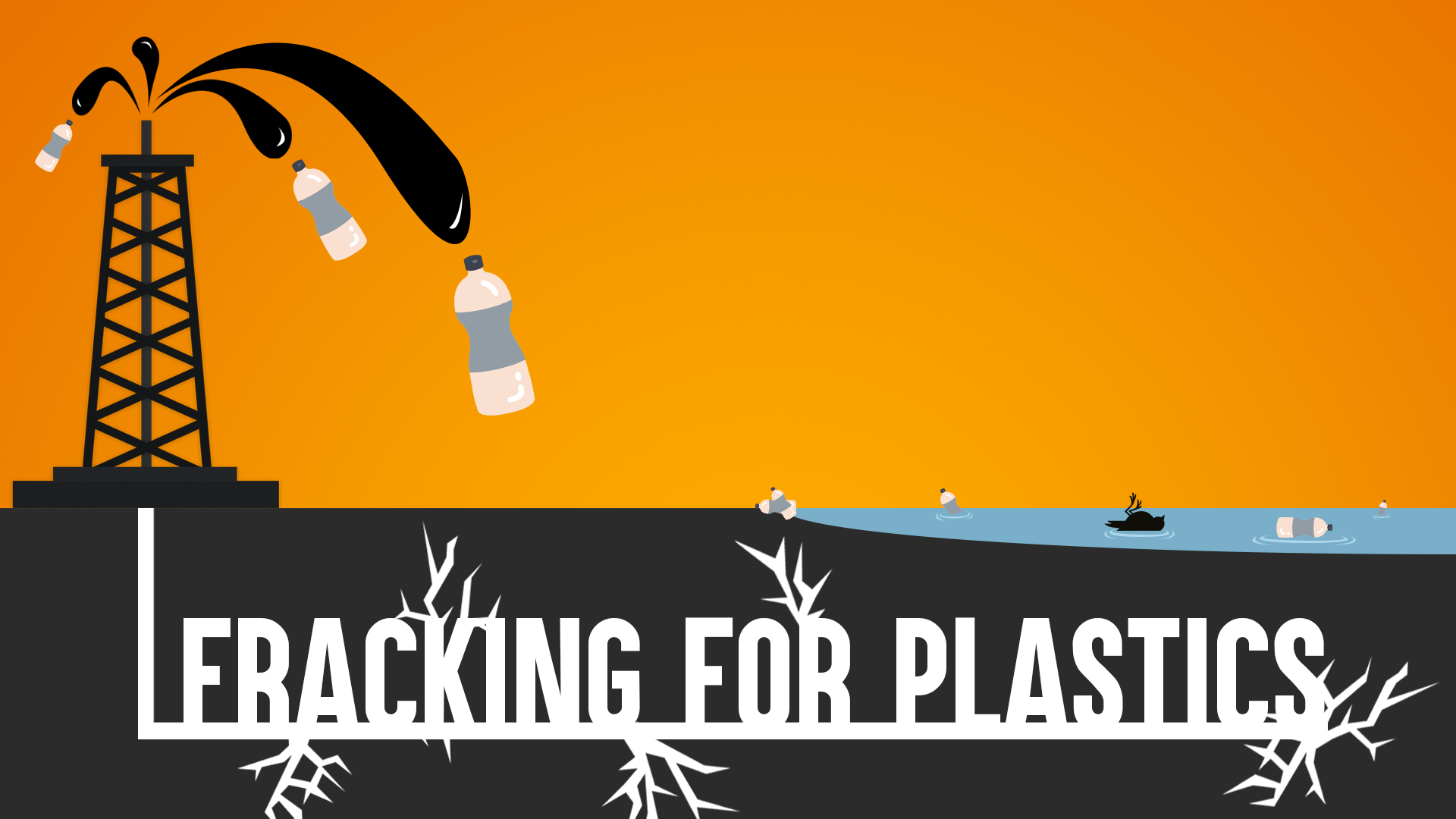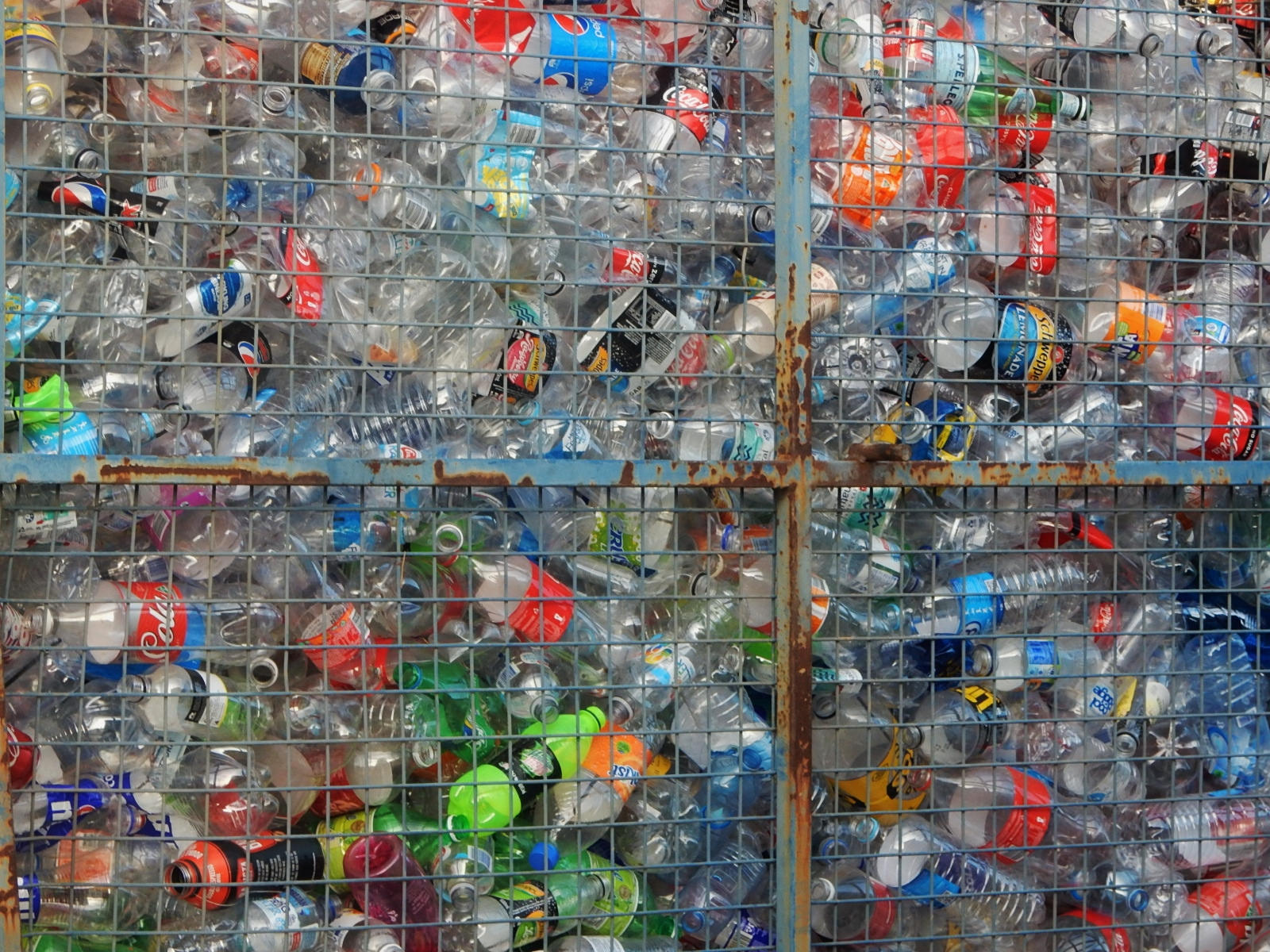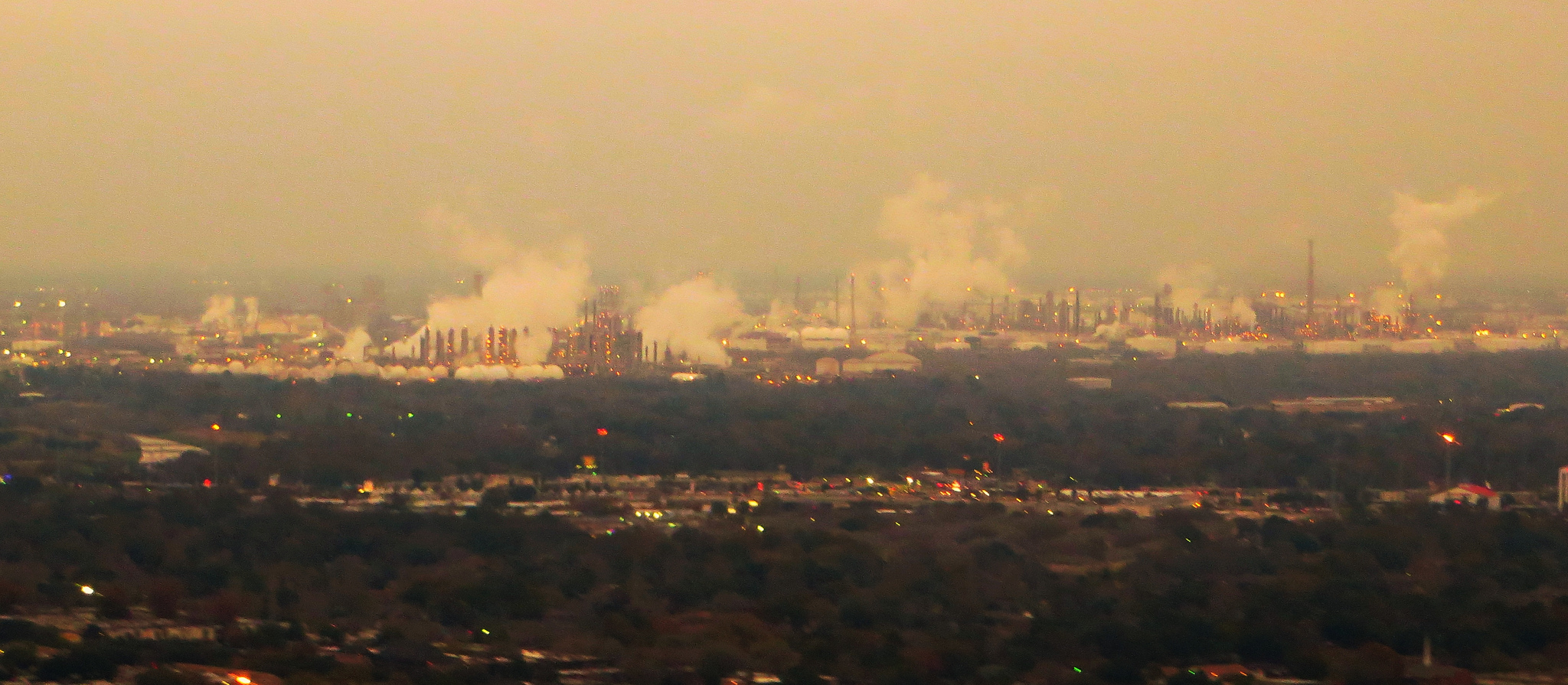A new report traces the life cycle of plastic from the moment an oil and gas well is drilled to the time plastic trash breaks down in the environment, finding “distinct risks to human health” at every stage.
Virtually all plastic — 99 percent of it, according to the Center for International Environmental Law (CIEL) report — comes from fossil fuels. And a growing slice comes from fracked oil and gas wells and the natural gas liquids (NGLs) they produce.
The report concluded that plastics bring toxic or carcinogenic health risks to people at every stage.
“Until we confront the impacts of the full plastic lifecycle, the current piecemeal approach to addressing the plastic pollution crisis will not succeed,” the report concludes. “At every stage of its life cycle, plastic poses distinct risks to human health, arising from both exposure to plastic particles themselves and associated chemicals.”
People can be sickened not only when plastics are produced, in other words, but also while plastic is actively used by consumers and then again after it’s thrown out, where plastic trash often breaks down into smaller and smaller bits that can contaminate the food chain and make its way into people’s bodies.
The scope of the risks requires an international response, the center said.
“Both the supply chains and the impacts of plastic cross and re-cross borders, continents, and oceans,” said David Azoulay, the center’s Director of Environmental Health. “No country can effectively protect its citizens from those impacts on its own, and no global instrument exists today to fully address the toxic life cycle of plastics.”
In the U.S., however, a major push is underway — and attracting hundreds of billions in investment, both foreign and domestic — to move in the opposite direction and produce more plastics and other petrochemicals.
The goal? To create new demand from industry for the raw materials produced by fracked shale wells.
This story is part of Fracking for Plastics, a DeSmog investigation into the proposed petrochemical build-out in the U.S. and the major players involved, along with the environmental, health, and socio-economic implications.
Shale drilling industry officials have been busy organizing marketing efforts to encourage the production of more plastics and petrochemicals — not only along the Gulf Coast, where communities have long borne the brunt of toxic pollution from petrochemical manufacturing, but also in Pennsylvania, Ohio, and West Virginia.
Industry groups argue that a shale-fueled plastics boom is a positive thing for the world environment because plastic-makers in many other countries operate under less stringent environmental controls than American manufacturers. It’s better, in other words, to make plastic here than in places like China, with its infamous air pollution problems.
Plus, they add, constructing a new “plastics belt” in the Rust Belt will help diversify the industry and protect against the impacts of severe storms along the Gulf of Mexico, which are predicted to be strengthened by climate change.
New plastic manufacturing plants, however, are also being built in China, and on the Gulf Coast. All told, this new investment is driving the world’s cumulative production of new plastic up so far that analysts warn there may not be enough demand from consumers.
Meanwhile, a Chinese policy setting strict standards for importing used plastics there has shaken the world’s plastic recycling market. In some cases, newly made plastic has become cheaper than recycled — meaning that new cheap plastic manufacturing could wind up pushing recycled plastics further out of the market.
Plastic bottles aplenty. Credit: Michael Coghlan, CC BY–SA 2.0
Forging a Plastic Future
The shale rush not only unleashed enormous supplies of fracked oil and gas, it also opened wide the taps for ethane, a colorless, odorless hydrocarbon at the center of the drilling industry’s plans to promote more plastic manufacturing. In 2008, America produced 701,000 barrels a day of ethane; by 2017, ethane production had more than doubled, reaching 1.426 million barrels a day, according to the U.S. Energy Information Administration (EIA). It will reach 2 million barrels a day by 2021, IHS Markit predicts.
The shale rush produced so much ethane that — even though ethane can command a higher price on its own — drillers have been leaving it mixed in with natural gas sold to burn for heat and power. (That “rejected” ethane, which industry advisors estimated at “several hundred thousand barrels” per day in 2017, isn’t counted in EIA’s production figures).
But that ethane can be transformed by chemical manufacturers into ethylene, and then on into the common plastic polyethylene which is widely used in plastic bags and packaging, among other uses.
As a result, a wave of planned investments in infrastructure to make more plastics and petrochemicals has swept shale regions across the U.S. While most of the investment has gone to building up the chemical corridor (also known as “Cancer Alley”) along the Gulf Coast, the Marcellus shale drilling industry now touts ethane from Pennsylvania, Ohio, and West Virginia as the lowest-cost ethane in the world and is seeking to attract petrochemical companies to the region.
Shell’s $6 billion ethane cracker, a massive petrochemical complex being built in Pennsylvania, will drink up 100,000 barrels a day of the state’s glut of ethane. And each day, the plant will churn out nearly 10 million pounds of polyethylene plastic pellets, a total of roughly 3.5 billion pounds of new plastic a year.
“On June 1, 2018, students and alumni from University of Pittsburgh dropped a massive banner off the Smithfield St. Bridge in downtown Pittsburgh to encourage Pittsburgh’s Mayor Peduto to support the Paris Climate Agreement and to stand against the Shell Petrochemical Plant (ethane cracker).” Credit and caption: Mark Dixon, public domain
And the industry is just getting started.
Chevron describes itself as “one of the largest leaseholders in the Marcellus Shale,” holding drilling rights to 660 square miles of the state, an area nearly five times as large as the city of Philadelphia.
In October, Chevron, Peoples Gas, and a collection of business associations published a report called “Forge the Future: Ideas for Action.”
It lays out a roadmap for Pennsylvania to start consuming vast amounts of shale gas and natural gas liquids (NGLs).
Forge the Future argues that the state should build roughly 6,000 megawatts’ worth of new natural gas power generation, convert half a million homes to use natural gas for their heating, and promote the construction of “6-8 major” data centers “preparing for the worldwide rollout of data-hungry Internet of Things.”
Its most ambitious plans to create new demand for fracked fossil fuels involve plastics and chemicals.
The report calls for construction of three to five new multi-billion dollar “ethane crackers” like Shell’s, another three to five plants to turn propane into propylene (used to make the plastic polypropylene), a few plants to make ammonia (used for fertilizer and also to make plastics), plus an unspecified number of other inorganic chemical plants.
And then there’s the infrastructure to support all that — like ethane storage “hubs” where NGLs can be stored underground and a massive pipeline network to connect all these sites.
The report calls on Pennsylvania to “streamline the permitting process for pipelines” (despite major problems with the state’s biggest NGL pipeline project, Energy Transfer’s Mariner East pipelines, currently the subject of an ongoing criminal investigation), to offer grants for “the last few miles” of more pipes, and to prepare “pad-ready sites” for chemical companies to start building on. (At the same time, the state should slash taxes, the report argues — not just for plastics manufacturers, but also specifically for drillers too, delving deep into the weeds of accounting rules it says should be changed).
“[T]here is urgency to act,” Forge the Future warns, “or we will lose out to more aggressive competitors.”
It contains just one full sentence on the environment.
Another marketing effort, Shale Crescent USA, was co-founded by the president of a private oil and gas drilling company, Artex Oil, and similarly spent much of the past year building a case for constructing new plastics and petrochemical plants in the Ohio Valley, namely West Virginia, Ohio, and western Pennsylvania.
Shale Crescent USA cites not only the low price of ethane from the Marcellus and Utica shales, but also the risks associated with Gulf Coast hurricanes like Hurricane Harvey.
The Trump administration seems to be listening. Late last year, the Department of Energy published a 91-page report to Congress citing the risk of “severe weather events” on the Gulf Coast as a reason to support building an ethane storage hub in Appalachia.
Troubled History
As Hurricane Harvey inundated the Arkema chemical plant in Crosby, Texas, with five feet of rain, first the power went out, at around 2:00 a.m. on August, 28, 2017. Then backup generators, which were keeping electrical power running inside the plant’s last remaining refrigerated warehouse, filled with hazardous chemicals, flooded and cut out.
Aware it was still vital to keep the plant’s organic peroxides chilled, workers scrambled to move a total of over 300,000 pounds’ worth of the organic compounds — used in plastic manufacturing — from that warehouse onto nine refrigerated trailers (six of which they’d managed to move to higher ground before flooding had made truck driving impossible).
After forklifts also gave out, the dozen-person crew resorted to hand-carrying 2,000 individual gallon containers of the extremely reactive peroxides, trudging at night through high waters surrounding the chemical plant. When it became clear that the trailers’ refrigeration would finally fail as well, workers abandoned the plant while managers arranged to evacuate people in a 1.5 mile zone around the site.
The Chemical Safety Board posted its post-investigation animated timeline of the Arkema disaster, Caught in the Storm: Extreme Weather Hazards, online on May 24, 2018.
First responders at the evacuation perimeter reported vomiting from the fumes when trailers and their volatile contents finally reached critical temperatures and ignited, according to a later lawsuit. More than 200 people could not return for a week. Criminal charges were eventually filed against Arkema (which vigorously disputed any wrongdoing) and two top executives.
The petrochemical industry on the Gulf Coast has a troubled history of causing industrial accidents like this, as well as air pollution and water contamination — and climate change is likely to make many problems worse, according to the new CIEL report. The industry asked for federal help to protect Gulf Coast refineries and petrochemical plants from the impacts of climate change, CBS reported in August 2018.
When Hurricane Harvey struck coastal Texas in August 2017, it was “supercharged” by unusually warm waters in the Gulf of Mexico linked to climate change, according to National Geographic, which reported “two separate teams of scientists have found humans’ fingerprints all over the storm.”
The ‘Death Fog’
But petrochemical construction in the Ohio River Valley brings its own unique set of risks. Numerous local environmental groups have called attention to the region’s hills and valleys, and in particular, a 1948 tragedy in the region that laid the groundwork for today’s environmental laws: the Donora Death Fog.
Twenty people died in Donora, Pennsylvania, a town outside Pittsburgh in the Monongahela River Valley, after an unusual set of atmospheric conditions caused air pollution from a U.S. Steel zinc works (a toxic blend that included carbon monoxide, sulfur dioxide, hydrofluoric acid, and particulates like zinc and lead) to become trapped near ground level in the river valley. More than a third of the 14,000 people living in the area were sickened. Investigators later discovered that “[i]f you looked at the X-rays of their lungs, they looked like the survivors of poison gas warfare,” said author Devra Davis, according to Smithsonian Magazine.
Now, environmental groups are concerned that new petrochemical construction in Appalachian river valleys could bring pollution concerns that differ from those found along the Gulf Coast.
“I wouldn’t wish the Gulf Coast environment on anybody,” George Czerniak, who served as Chief of Air Enforcement for the U.S. Environmental Protection Agency Region 5 (covering Ohio and other states) from 1991–2012 and directed the region’s Air and Radiation Division from 2012–2016, told DeSmog. “But yes, I think the public is probably right to be concerned about that.”
“Plants such as these emit carcinogenic pollutants,” he continued. “Benzene would be one of them, but they also emit a lot of other volatile organic compounds which are precursors for ground-level smog. And that, depending on the geographic configuration, certainly if you’re in a valley, yes, you could be impacted by that.”
Building new petrochemical plants in the Ohio River Valley also won’t stop the toll of pollution and industrial disasters on the Gulf Coast — in part because the Gulf Coast is also in the middle of a shale fueled-construction boom of its own. From 2016 to 2018, Texas and Louisiana approved 31 new petrochemical plants along the Gulf of Mexico. Just two of Exxon’s recent Gulf Coast expansion projects, at the Beaumont hub and at its Mont Belvieu plant, will raise their polyethylene plastic output to a combined 4 billion pounds a year.
Petrochemical refineries in metro Houston, Texas, January 13, 2015. Credit: Ken Lund, CC BY–SA 2.0
Expanding not just along the Gulf Coast but also into Appalachia might protect buyers of industrial chemicals and plastics against market disruptions in the event of a hurricane, as Shale Crescent USA argued — but it will also leave more people exposed to safety hazards, there and around the world.
The Ohio River Valley is expected to see serious consequences of its own from climate change. Petrochemical and plastics plants are often located near water, in part because massive equipment can be hauled in by barge and in part because operations and on-site power generation may require steam or cooling water. A December 2017 report by the Army Corps of Engineers predicts the Ohio River Valley will face a greater risk of storms causing major floods, droughts that could make barge travel and power generation more difficult, and other serious impacts from a warming climate.
In fact, pollution from the new construction is likely to make climate change worse everywhere. Scientists have concluded that a shale-driven construction boom is likely to drive the industry’s greenhouse gas emissions “dramatically” higher in the U.S.
“As ethylene production is one of the largest contributors to the energy consumption and greenhouse gas emissions within the chemical industry, the expansion of ethylene capacity is likely to dramatically increase the U.S. energy consumption and greenhouse gas emissions,” the journal Advances in Engineering reported, citing a 2016 study and adding that even using state-of-the-art technology would not cut emissions enough to cancel out the rise from adding more plants.
Plastic — and specifically polyethylene — can even release greenhouse gases of its own as it degrades.
“Plastic represents a source of climate-relevant trace gases that is expected to increase as more plastic is produced and accumulated in the environment,” David Karl, senior author of a study documenting methane and ethylene gas emissions from degrading plastic, said when the research was published in 2018. “This source is not yet budgeted for when assessing global methane and ethylene cycles, and may be significant.”
Better to Build in the U.S. Than China?
Supporters of building new petrochemical and plastics plants in the U.S. argue that no matter if plants are built on the Gulf Coast or in the Rust Belt, the global environment benefits because America’s petrochemical industry is better regulated than manufacturing in China.
But China — already the world’s largest producer of many plastics — is on a construction binge of its own, seeking to make the raw materials for plastics from coal. A Shell Chemicals vice president, Olivier Thorel, has said those plants generate so much carbon dioxide (CO2) pollution, he calls them “massive CO2 machines that make chemicals as a sidestream.”
And that’s the heart of the problem — the rush to make plastics from cheap fracked shale gas in America hasn’t been driving more polluting plants out of business, it’s been adding to the world’s new plastics production.
“Growing U.S. exports are expanding, not replacing, plastics production in other regions,” the Center for International Environmental Law found in an earlier report published in 2017.
Instead, the new construction may add to the problems that the world’s plastic recycling industry is already experiencing. As mentioned earlier, in 2018, China began refusing to import dirty or hazardous shipments of recycled materials from around the world. “China and Hong Kong went from buying 60 percent of the plastic waste exported by G7 countries during the first half of 2017,” the Financial Times reported, “to taking less than 10 percent during the same period a year later.”
The disruption is so severe that half of Philadelphia’s recycling — 200 tons a day — was sent right to the incinerator in the last few months, The Guardian reported on February 21.
The International Energy Agency warned in the summer of 2018 that the amount of plastic waste in the world’s oceans is on track to double in just over a decade. Roughly 100 million metric tons of plastic waste has already found its way into the world’s oceans — and every year, between 5 million and 15 million tons are added.
This figure is pretty terrifying.
This ground-breaking report from @ciel_tweets et al. exposes the risks posed to our health at every stage of the plastic lifecycle, from extraction of fossil fuels, to consumer use, to disposal and beyond. #HiddenCostsOfPlastic pic.twitter.com/HWyfGf3RuT
— Ploy Achakulwisut, PhD (@_aploy) February 20, 2019
From there, researchers say plastic may be getting into the food chain — and even potentially into each of us. “Microfibers and other plastic microparticles are increasingly being documented in human tissues,” CIEL’s new report observes.
An American Chemistry Council spokesperson told DeSmog that the council was reviewing the new CIEL report. As of publication time, the council had not yet responded to questions about its reaction to the report or about impacts that building new petrochemical and plastics manufacturing plants using raw materials from American shale wells will have on the climate, plastic recycling, or human health.
To be sure, a transition to renewable energy will very likely require petrochemicals and plastics, to build lighter vehicles, as components for solar panels and power storage, and to improve household energy efficiency.
Campaigns focus instead on the world’s consumption of single-use plastics, like disposable bottles, packaging, bags, and even straws. In fact, more than half of the world’s polyethylene production currently winds up in single-use products — and the industry projects that demand for single-use plastic will rise worldwide.
With all that in mind, some environmental groups are calling for the U.S. to tap the brakes on new plastic manufacturing — and on climate-changing pollution — by addressing both right at the nation’s oil and gas wells.
“We know enough to justify taking immediate action to reduce our dependence on plastic,” said the FracTracker Alliance’s Erica Jackson, “and that starts by keeping plastic feedstocks — oil and gas — in the ground.”
Main image: Marine litter found during beach cleanup in Rekvik, Norway. Credit: Bo Eide, public domain
Subscribe to our newsletter
Stay up to date with DeSmog news and alerts










